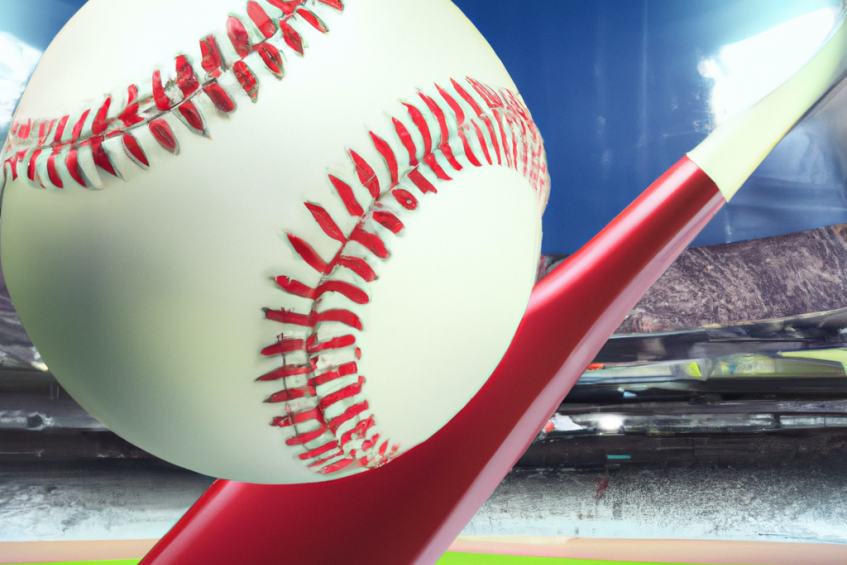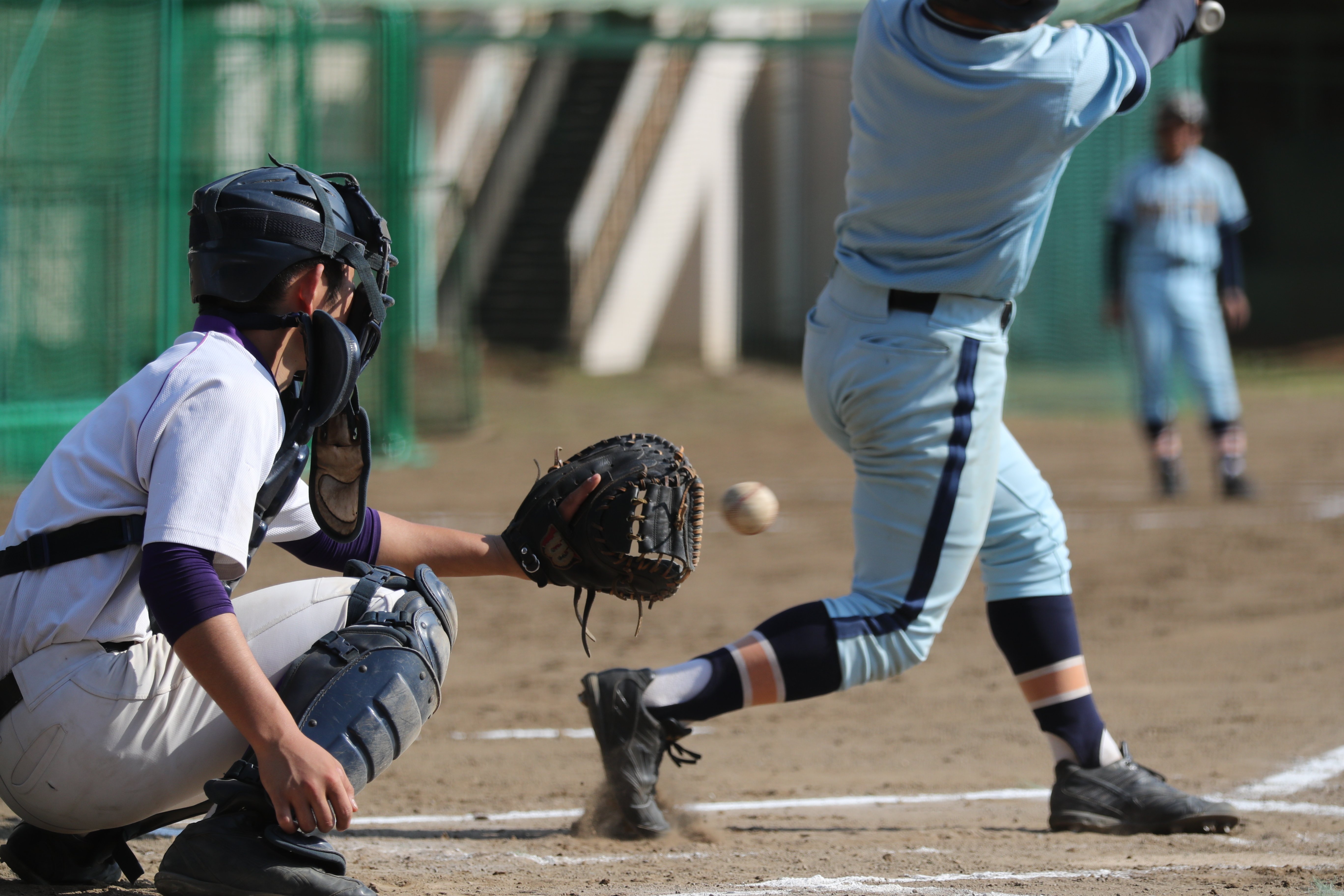
In baseball, slugging percentage (SLG) is a statistic that measures a player's ability to hit for power. It is calculated by dividing the total number of bases a player has achieved by their total number of at-bats. In other words, it's a measure of how often per at bat, a player hits for extra bases (such as doubles, triples, and home runs) compared to their overall number of plate appearances.
To calculate baseball slugging percentage, you must determine their true percentage of total bases. This is done by adding up all of the bases a player has gained on hits (singles, doubles, triples, and home runs). For example, a single is worth one base, a double is worth two bases, a triple is worth three bases, and a home run is worth four bases. So, if a player hits a single, double, and home run in three at-bats, they would have seven bases (1 + 2 + 4).
To calculate slugging percentage, the first step is to determine the total number of bases a player gets from hits. For example, if a player hits a single, they are awarded one base. If they hit a double, they are awarded two bases, and so on. Home runs are awarded four bases.
The total slugging percentage gained and number of bases a player gets is then added up over a certain period of time, such as a game, a season, or a career.
The second step in calculating slugging percentage is to determine the total of at-bats a player has had over the same period of time. An at-bat is any plate appearance that is not a walk, hit-by-pitch, sacrifice bunt, or sacrifice fly.
The slugging percentage represents the total number of times a player bats is then divided into the total bases a player has earned to get their slugging percentage. For example, if a player has 200 at-bats and has earned 300 total bases, their slugging percentage would be 1.500 (300/200).
Overall, slugging percentage is a useful statistic for measuring a player's power at the plate and their ability to hit for extra bases.
SLG = (Total number of bases) / (Total number of at-bats)
SLG = 7 / 3
SLG = 2.33
In this example, the player's slugging percentage would be 2.33.
It's important to note that walks and hit-by-pitches do not count as at-bats in the calculation of baseball slugging percentage. Only plate appearances that result in a hit or an out (such as a strikeout or flyout) are included in the calculation term slugging percentage.

Batting average is calculated by dividing the batter's total number of hits by the total of at-bats. It measures the percentage of at-bats that result in a hit.
Slugging percentage, on the other hand, is a measure of a player's power at the plate. It is calculated by adding the total bases (singles = 1 base, doubles = 2 bases, triples = 3 bases, home runs = 4 bases) a player gets from hits, then dividing by the total amount of at-bats.
Slugging percentage calculation takes into account not only the number of hits, but also the type of hits, giving extra weight to extra-base hits.
While batting average and slugging percentage are both measures of a player's offensive performance, slugging percentage is generally considered to be a more accurate measure of a player's overall hitting ability. A high slugging percentage indicates that a player is hitting the ball with power and getting more extra-base hits, which can lead to more runs being scored.
In Major League Baseball (MLB), the average slugging percentage for a player is typically around .420-.430. A slugging percentage above .500 is generally considered to be a good slugging percentage, indicating a player with above-average power at the plate.
An all-star caliber slugging percentage is usually a slugging average in the range of .550 or higher, indicating an elite player with exceptional power and offensive production. Some of the greatest all-time hitters have career slugging percentages of over .550.
It's important to note that these are general guidelines and that slugging percentage can vary by position and other factors. For example, a player who primarily hits for average, a power hitter such as a leadoff hitter, may have a lower slugging percentage even if they are an excellent player.
Overall, slugging percentage is a helpful tool for evaluating a player's power-hitting ability and comparing players combining slugging% across different positions and teams. By understanding how it is calculated and what it measures, you can better understand a player's offensive capabilities and how they contribute to their team's success.

Ever wonder who has the highest slugging percentage in MLB History? We'll let's take a quick look at some historic achievers at the plate.
Babe Ruth - .690 Total Bases: 5,793 At-bats: 8,399 Hits: 2,873 Home Runs: 714 RBI: 2,213
Ted Williams - .634 Slugging Percentage, Total Bases: 4,821 At-bats: 7,706 Hits: 2,654 Home Runs: 521 RBI: 1,839
Lou Gehrig - .632 Slugging Percentage, Total Bases: 5,060 At-bats: 8,001 Hits: 2,721 Home Runs: 493 RBI: 1,995
Jimmie Foxx - .609 Slugging Percentage, Total Bases: 4,956 At-bats: 7,413 Hits: 2,646 Home Runs: 534 RBI: 1,922
Hank Greenberg - .605 Slugging Percentage, Total Bases: 3,657 At-bats: 5,432 Hits: 1,628 Home Runs: 331 RBI: 1,276
Rogers Hornsby - .577 Slugging Percentage, Total Bases: 5,913 At-bats: 8,173 Hits: 2,930 Home Runs: 301 RBI: 1,584
Manny Ramirez - .585 Slugging Percentage, Total Bases: 4,826 At-bats: 8,244 Hits: 2,574 Home Runs: 555 RBI: 1,831
These are just a few of the MLB Career Slugging Percentage masters over the past 100+ years with the highest slugging percentage.
On-base percentage (OBP) and slugging percentage (SLG) are two crucial baseball statistics that are interrelated in measuring a player's overall offensive performance. OBP quantifies a player's ability to reach base, while SLG gauges a player's power at the plate, including extra-base hits. Together, they form the OPS baseball stat (on-base plus slugging), which is a more comprehensive metric for evaluating a player's offensive capabilities, incorporating both OBP and SLG.
A slugging percentage calculator is a handy tool for calculating a player or team's slugging percentage. It considers the hits' type and number to provide an accurate result quickly. By inputting the total number of bases and at-bats, the calculator can calculate the slugging percentage. This modern tool can analyze and compare performance statistics for both individuals and teams.
Utilize the tool below to determine any players slugging percentage.
Chris Sloan is a former baseball league commissioner and travel baseball coach who has made significant contributions to the sport. In 2018, he founded selectbaseballteams.com, a website that helps parents find youth and travel baseball teams in their local areas. Since its launch, the website has experienced impressive growth, offering a wealth of resources including teams, news, tournaments, and organizations. Chris's unwavering passion for baseball and his innovative approach to connecting parents with quality baseball programs have earned him a respected reputation in the baseball community, solidifying his legacy as a leading figure in the world of youth and travel baseball.
There are 0 comments on "Baseball Slugging Percentage - What it is and how it's Calculated."
chandler allen says:
"Hi my name is chandler, i’ve enjoyed..."
On Wanting to tryout for summer ball. as an 18 year old
david graham says:
"With no current MLB team in Canada,..."
On With no current MLB team in
Charles Chavez says:
"To All Coaches: Do you have13U or..."
On Looking for Games